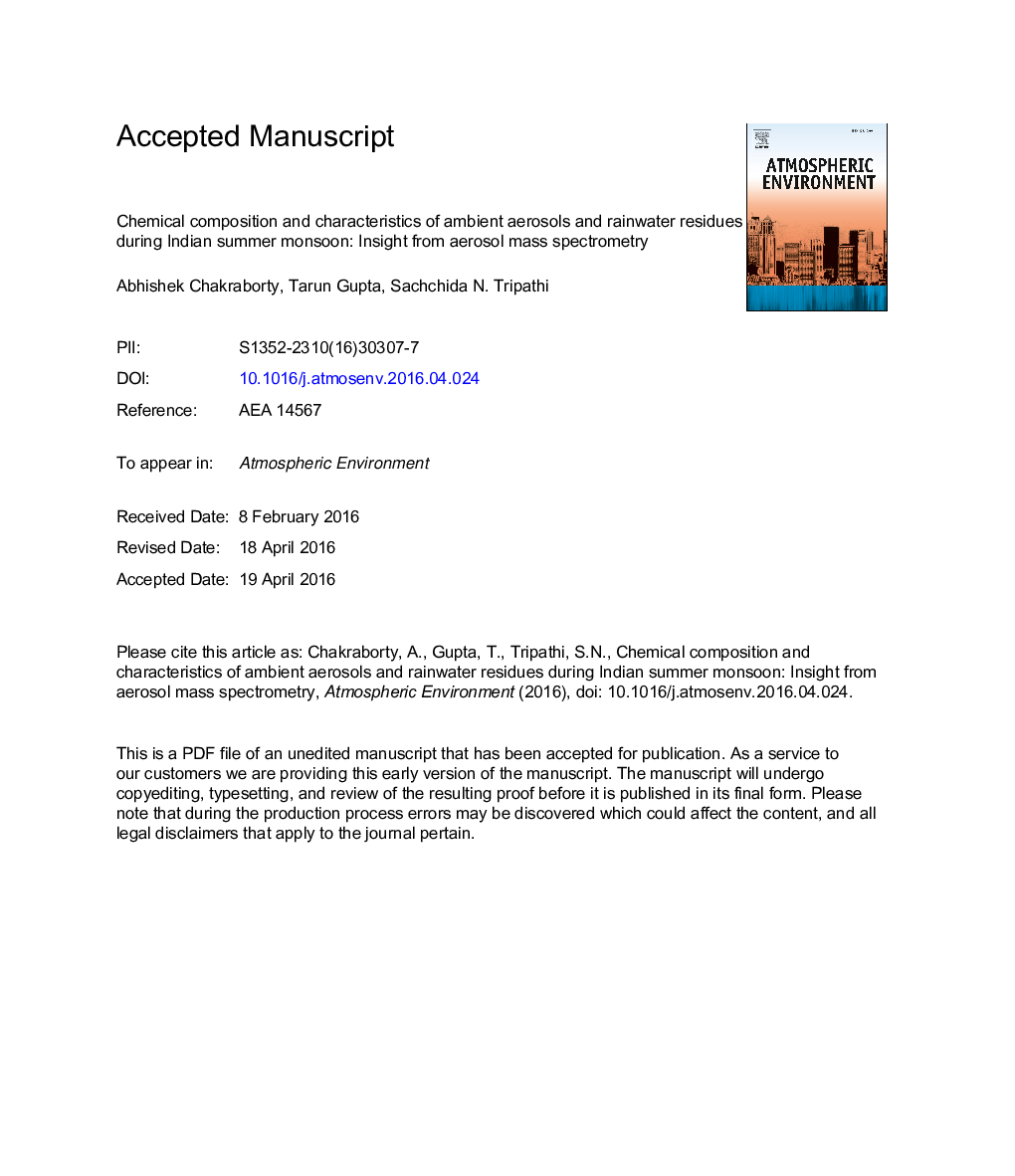| کد مقاله | کد نشریه | سال انتشار | مقاله انگلیسی | نسخه تمام متن |
|---|---|---|---|---|
| 6336672 | 1620338 | 2016 | 40 صفحه PDF | دانلود رایگان |
عنوان انگلیسی مقاله ISI
Chemical composition and characteristics of ambient aerosols and rainwater residues during Indian summer monsoon: Insight from aerosol mass spectrometry
ترجمه فارسی عنوان
ترکیب شیمیایی و ویژگی های آئروسل های محیطی و باقی مانده های آب باران در طی فصل بهار موسمی: بینش از طیف سنجی جرمی آئروسل
دانلود مقاله + سفارش ترجمه
دانلود مقاله ISI انگلیسی
رایگان برای ایرانیان
موضوعات مرتبط
مهندسی و علوم پایه
علوم زمین و سیارات
علم هواشناسی
چکیده انگلیسی
Real time composition of non-refractory submicron aerosol (NR-PM1) is measured via Aerosol mass spectrometer (AMS) for the first time during Indian summer monsoon at Kanpur, a polluted urban location located at the heart of Indo Gangetic Plain (IGP). Submicron aerosols are found to be dominated by organics followed by nitrate. Source apportionment of organic aerosols (OA) via positive matrix factorization (PMF) revealed several types of secondary/oxidized and primary organic aerosols. On average, OA are completely dominated by oxidized OA with a very little contribution from biomass burning OA. During rain events, PM1 concentration is decreased almost by 60%, but its composition remains nearly the same. Oxidized OA showed slightly more decrease than primary OAs, probably due to their higher hygroscopicity. The presence of organo nitrates (ON) is also detected in ambient aerosols. Apart from real-time sampling, collected fog and rainwater samples were also analyzed via AMS in offline mode and in the ICP-OES (Inductively coupled plasma - Optical emission spectrometry) for elements. The presence of sea salt, organo nitrates and sulfates has been observed. Rainwater residues are also dominated by organics but their O/C ratios are 15-20% lower than the observed values for ambient OA. Alkali metals such as Ca, Na, K are found to be most abundant in the rainwater followed by Zn. Rainwater residues are also found to be much less oxidized than the aerosols present inside the fog water, indicating presence of less oxidized organics. These findings indicate that rain can act as an effective scavenger of different types of pollutants even for submicron particle range. Rainwater residues also contain organo sulfates which indicate that some portion of the dissolved aerosols has undergone aqueous processing, possibly inside the cloud. Highly oxidized and possibly hygroscopic OA during monsoon period compared to other seasons (winter, post monsoon), indicates that they can act more efficiently as cloud condensation nuclei.
ناشر
Database: Elsevier - ScienceDirect (ساینس دایرکت)
Journal: Atmospheric Environment - Volume 136, July 2016, Pages 144-155
Journal: Atmospheric Environment - Volume 136, July 2016, Pages 144-155
نویسندگان
Abhishek Chakraborty, Tarun Gupta, Sachchida N. Tripathi,
